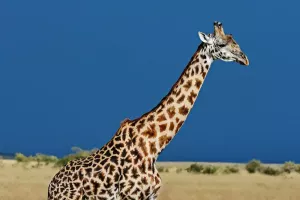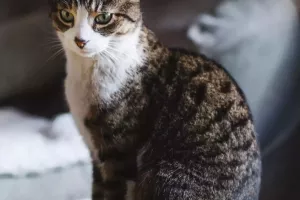Polar bears, also known as white bears, belong to the subfamily Ursus, and are one of the largest terrestrial carnivores in the world today, with a size comparable to that of a large brown bear. Adult polar bears stand up to 2.8 meters high and shoulder height 1.6 meters. Males weigh around 300-800 kg and females around 150-400 kg. Before winter comes, polar bears will accumulate a lot of fat, and their weight can sometimes reach more than 800 kilograms. It is currently listed as a vulnerable species by the International Union for Conservation of Nature.
Polar bears live in the polar regions, and their hair is white and very cute. Polar bears appear in many cartoons, and they always play a docile and honest image.
The skin of polar bears is actually black. The polar bear looks snow-white, but its fur is actually transparent, made up of keratin, and appears white due to internal reflections. The skin under polar bear fur is black and absorbs heat from the sun to keep it warm.
Polar bears have the same vision and hearing as humans, but their sense of smell is extremely sensitive, seven times that of dogs. Polar bears can run up to 50-60 kilometers per hour. Moreover, polar bears are also very good swimmers, able to swim more than 90 kilometers in the sea at a speed of 10 kilometers per hour, so that they were once considered marine animals.
Polar bears generally have two hunting modes, the most commonly used is the waiting method. They would find the seal's breathing holes on the ice beforehand and wait patiently for hours. As soon as the seals emerge, they make a surprise attack and use their sharp claws to drag the seal up through the breathing holes. If the seals are on the shore, they will also hide out of sight of the seals, then crept over and attack. Another mode is to dive directly under the ice surface, and not attack until the seals close to the shore, directly cutting off the seal's retreat. After eating and drinking, the polar bear will carefully clean up the hair and remove the residue of the food.
About 66% of their lives are in a static state, such as sleeping, resting, or watching for prey, and the rest of their time is spent walking on land or ice, swimming, and enjoying food.
Polar bears are very active from March to May every year, rushing around in various ice floes in order to forage for food, and live an amphibious life. In the severe winter, polar bears go out to greatly reduce their activities, and they can almost go without food for a long time. At this time, they will find a sheltered place to sleep, and their breathing rate will decrease into a local hibernation state. The so-called partial hibernation means that they are not hibernating like snakes and other animals. Instead, it enters a state of half-dreaming and half-awake, and in the event of an emergency, it can wake up immediately to cope with the unexpected. Also, polar bears just don't eat or drink for extended periods of time, not the entire winter.
However, in recent years, the living environment of polar bears has gradually deteriorated. Plastic pollution, high temperature, and melting ice floes have inevitably threatened the survival of local polar bears, as well as the lives of all wild animals in the Arctic Circle. Protecting the environment is everyone's responsibility. It's time to act for the cute polar bear!


